TF 150 Anniversary Sign¶
In 2022 Teknologföreningen celebrated its 150th anniversary. Proceeding each annual ball a mural in the theme of each event gets painted on the concrete walls to commemorate the event. In honor of the anniversary, we decided to make something special that would represent the anniversary year as a whole and that could get moved around.
This project was a group effort. With the group consisting of the following members:
- Agnes Weckström, masters student in design at IDBM
- Katarina “Katti” Jakobsson, masters student in landscape architecture.
- Arthur Tollet (me), masters student in space science and technology.
Agnes and Katti were responsible for art design, whereas I handled mechanical and electrical design and fabrication. Assembly was a team effort.
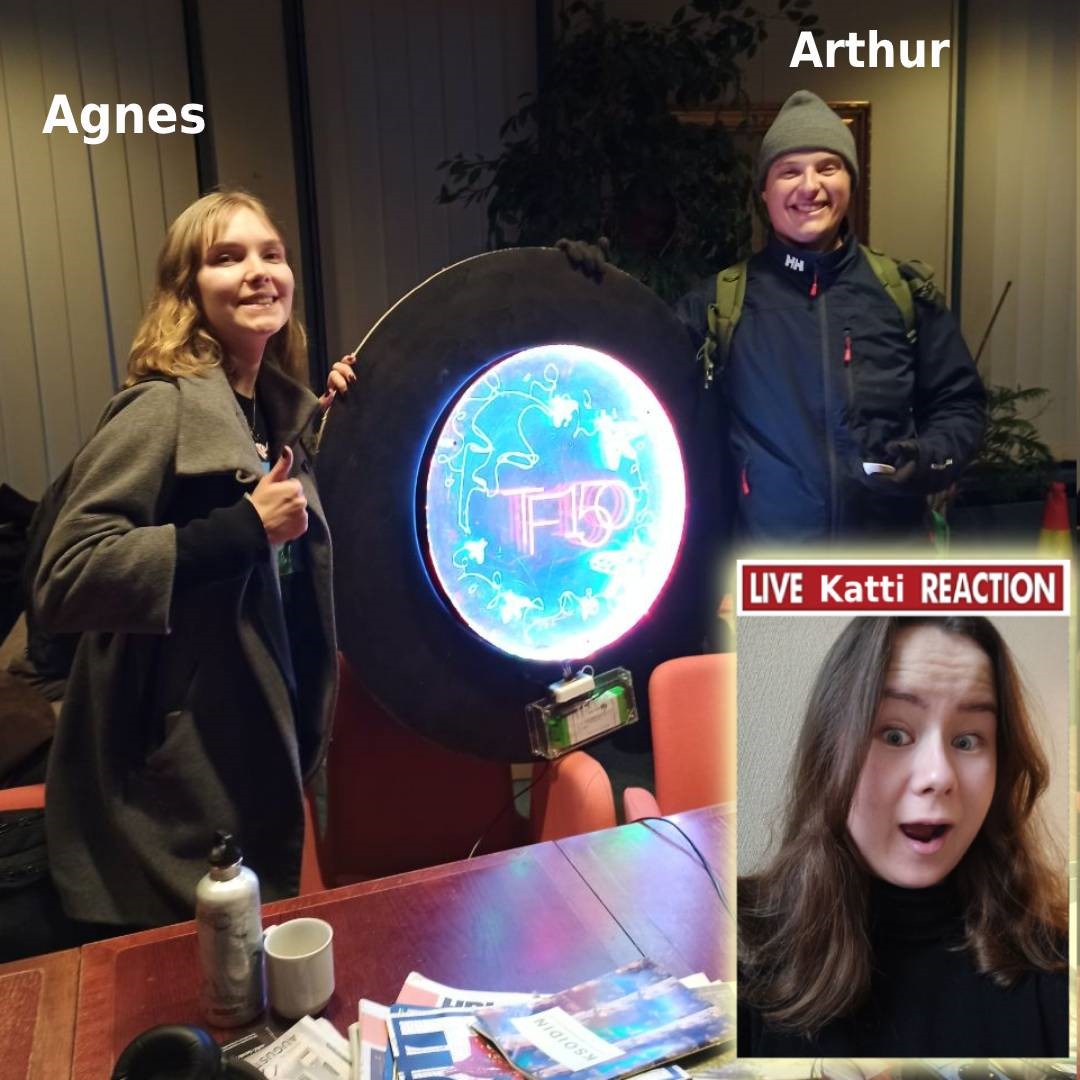
Planning and concept¶
We were very fortunate to have visionary arts students in the group, personally I gladly left the concept and graphic design phase to them.
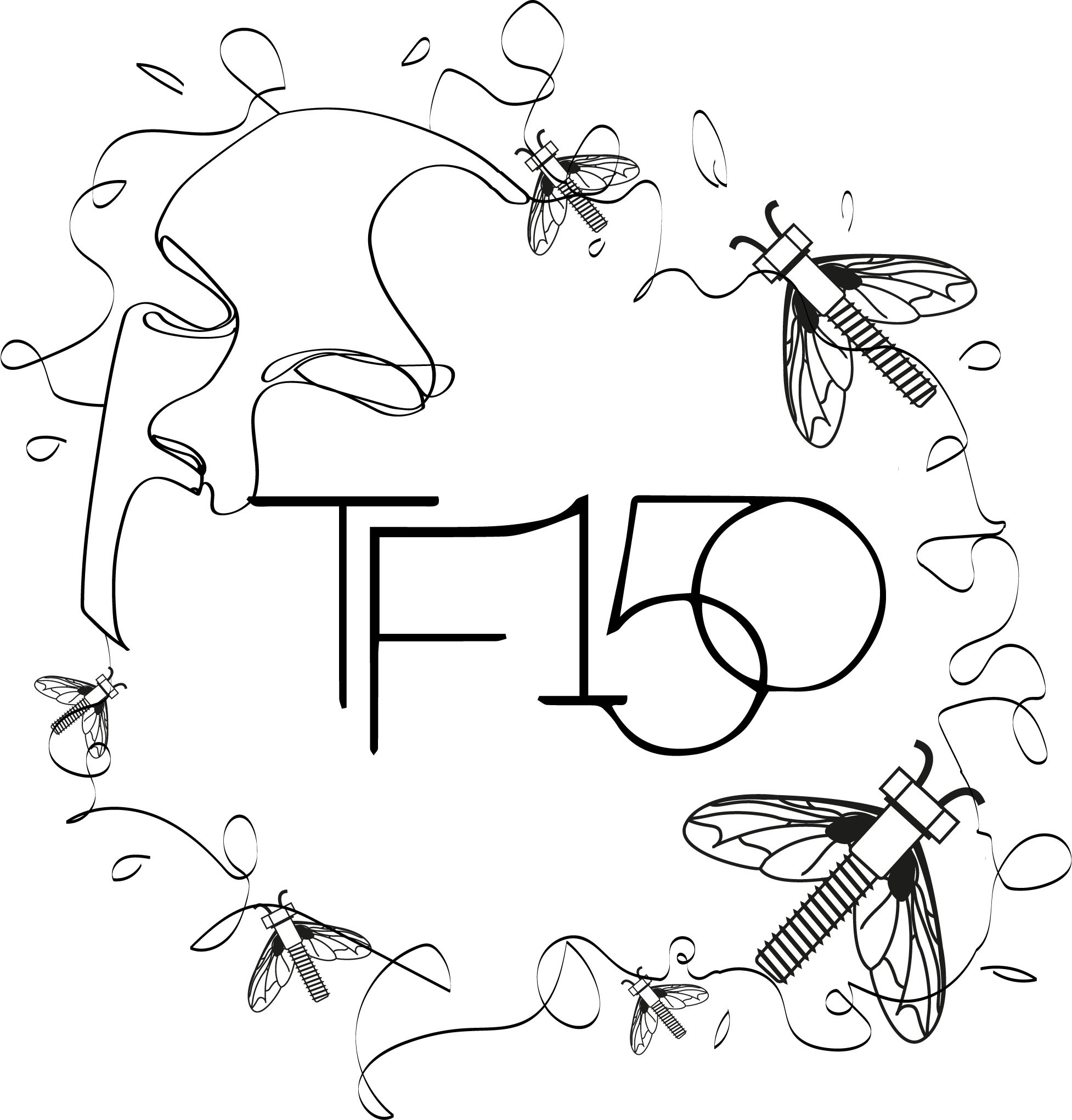
The three different motives symbolize different events that took place during the anniversary year. TF150 for the anniversary year as a whole. Screws made to look like moths to represent the academic spex theatre held that year, spexet Frankenstein. A half mask, to represent the annual balls theme, which was inspired by phantom of the opera. As a whole the piece serves to remind the members of Teknologföreningen of the year’s unforgettable events.
In the end, the graphic team delivered three superimposed graphics. Next, Hardware phase.
Prototyping¶
The original idea was inspired by another sign at TF, a commercial bought “Neon” LED sign.
For our project, we not only set out to match, but to outdo the neon sign, and do so on a vastly smaller budget.
I had some previous experience with edge lit acrylic, so that quickly became the method of choice for our project.
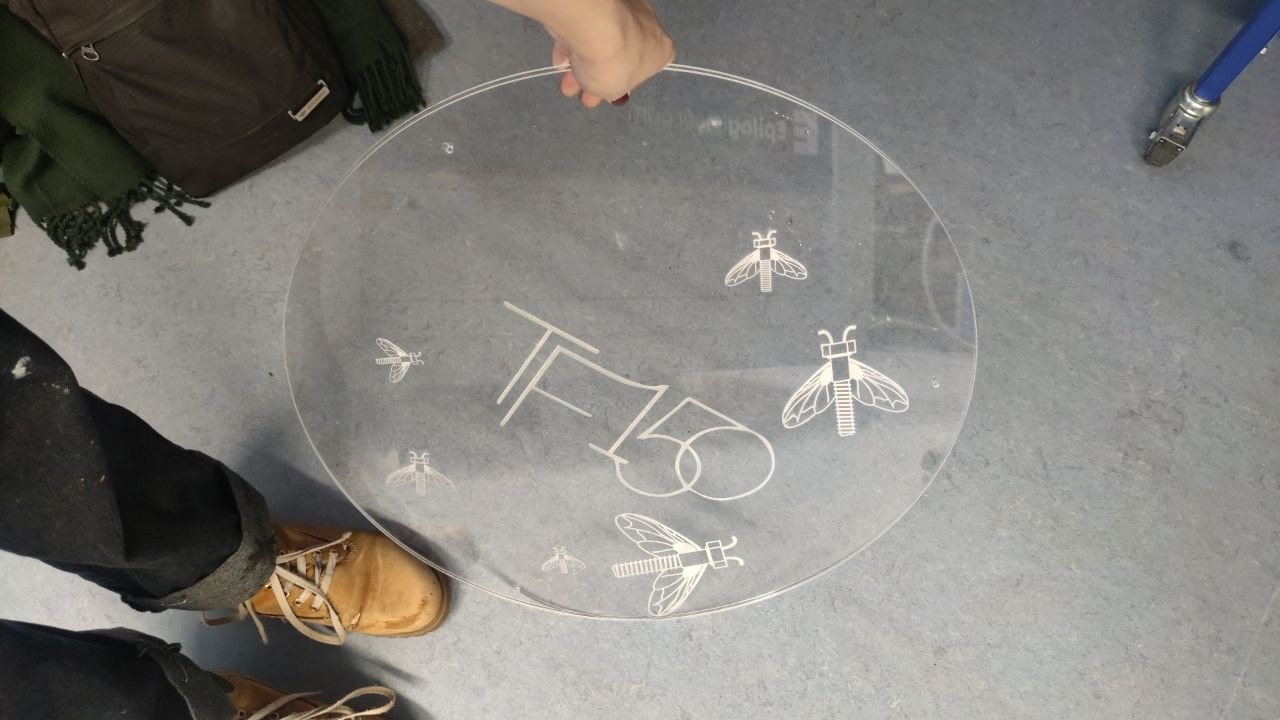
To begin with, we cut some scaled down test pieces at fablab.
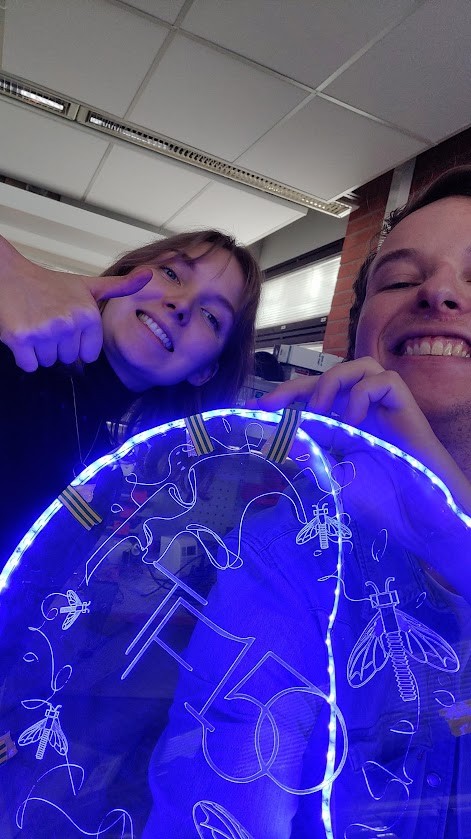
Taping some LED strip to acrylic worked surprisingly well. It also turns out that the engraving looks much nicer seen from reverse, so the production versions had the engraves done as mirror images.
LEDs¶
For lighting we decided on 12V RGB light strips. These have four inputs, a common VDD and three grounds for the three colors.
There are a couple of solutions to get the panels to glow in different colors. The simplest solution would be to have three separate LED controllers. However, this is not only more expensive, but a hassle for the User, as they’d need to juggle three different remotes.
Instead, why not use one controller?
We had the idea to cross wire the three outputs to three different color inputs each, so that they activate different colors on the other panels in the order:
| Red | Green | Blue |
|---|---|---|
| Green | Blue | Red |
| Blue | Red | Green |
This should not only require only one controller, but ensure that the panels always glow in different colors (“except on white, i.e. when all leds are lit)
Build¶
Size was determined by the material on hand, 600x900mm sheets. The final mural is just under 600mm in diameter.
The LEDs were attached using hot glue, as that both provided a nice interface and didn’t seem to affect either leds or acrylic. The channel splitting was achieved through a custom milled PCB. We also found it important to include a joke (in Swedish)
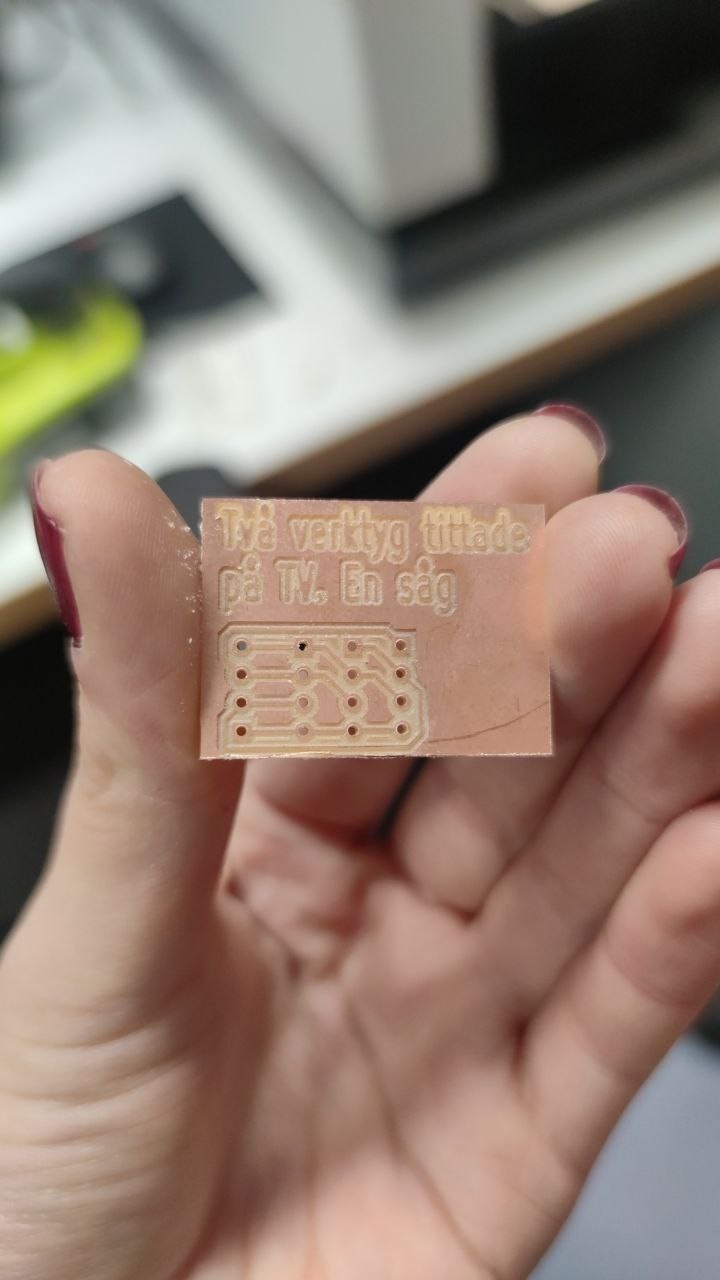
LED connection was handled with ordinary 2.54mm headers and sockets. These could in hindsight have been replaced with more robust connectors, such as JST PH. Those could be retrofitted with a bit of soldering and a new PCB however.
For tidying the design we dimensioned a finger joint box with boxes.py to hold the power supply. We also wrapped the outside of the LED strips with PE sheet, and installed everything on a wooden, black painted backboard.
Result¶
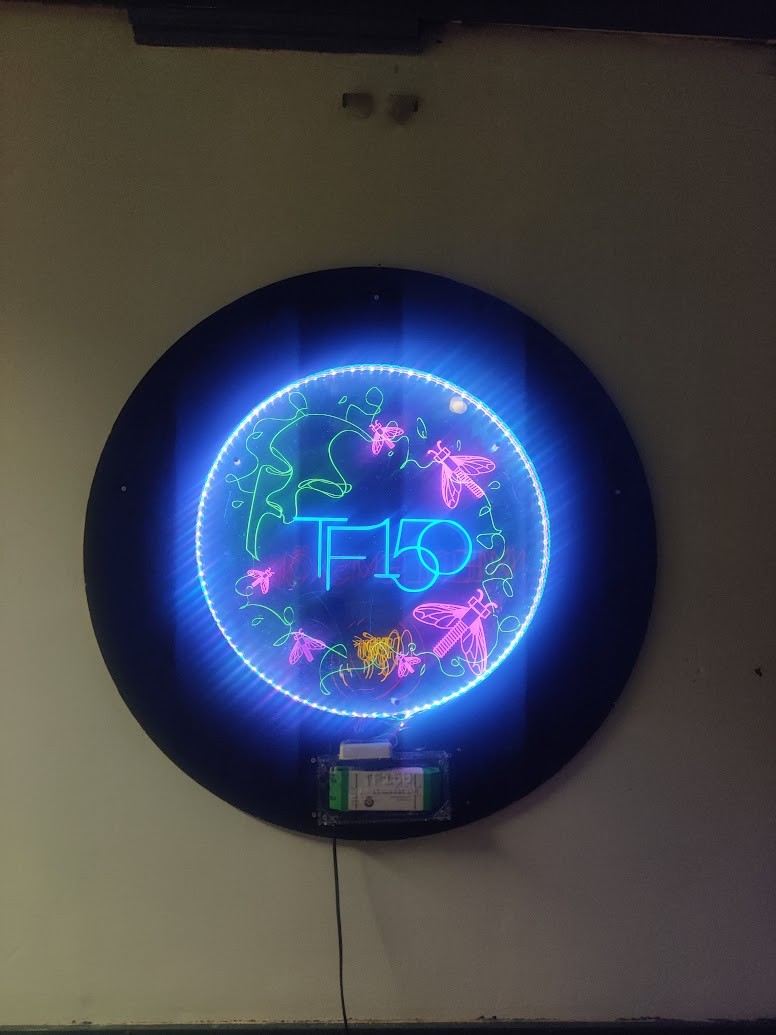
The results speaks for themselves. The edge light effect works really well, as does the color splitter. In fact, it turns out that the leds produce really interesting compound colors when multiple leds are lit. These also complement each other nicely.
As mentioned before, the connectors could be a little more robust. Especially the blue channel seems to lose contact a lot. However, this has a surprisingly small effect on the color display, merely blacking out the LEDs once every rotation.
The installation is currently installed in quite a dark area of TF, so the lights pop out even more. We are also planning to exhibit the mural at Digital Fabrication Showcase 2023!